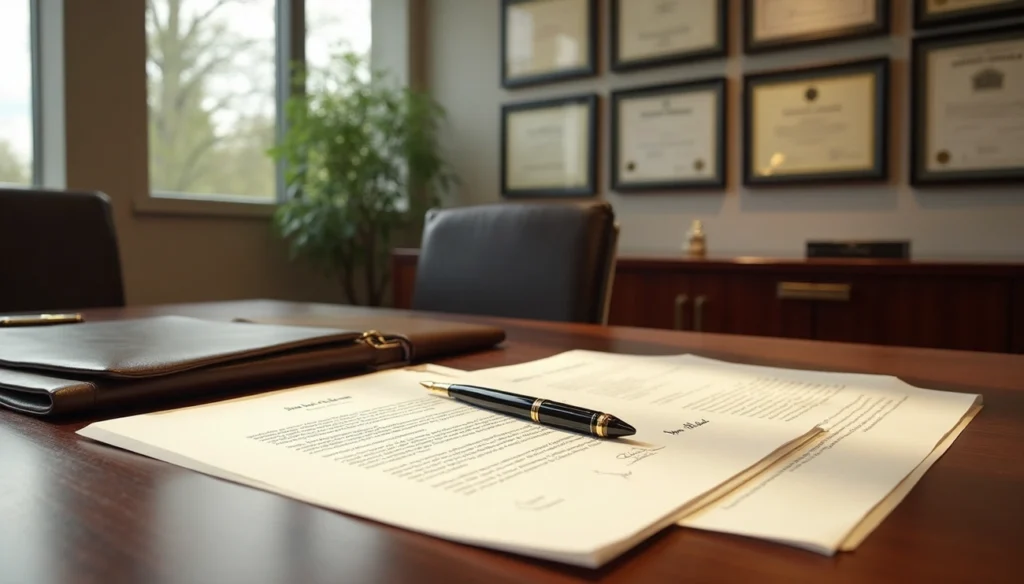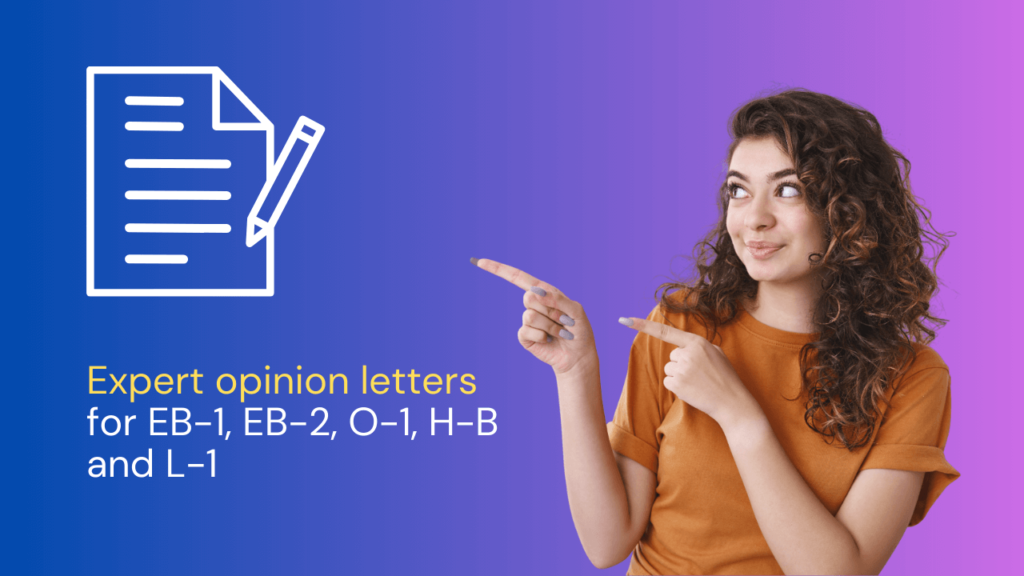Write an EB1 Recommendation Letter That Gets Approved
Strong evidence of international recognition stands as a core USCIS requirement for EB1 outstanding professor/researcher petitions. A powerful EB1 recommendation letter plays a vital role in your application’s success.
Regular processing takes 7-9 months for typical adjudication. Your recommendation letters must meet high standards. These letters prove your extraordinary abilities and demonstrate your international recognition within your field.
Take Kennesaw State University as an example. The university welcomes over 1,700 international students from 136 countries. Many faculty members choose this immigration path yearly. Dr. John Doe’s success story stands out. His recommendation letters showcased his 52 published articles in international journals and 53 worldwide presentations.
Your approval chances depend on understanding the distinctions between EB1A recommendation letter requirements and other categories. This piece guides you through creating stellar recommendation letters. You’ll learn the exact steps to highlight your exceptional abilities and boost your approval chances, whether you need an EB1 recommendation letter sample or immigration letter support examples.
Understand the Purpose of an EB1 Recommendation Letter
Recommendation letters are the life-blood of a successful EB1 petition. These letters provide objective validation of your extraordinary abilities from prominent experts in your field. You need to understand their purpose and requirements to maximize your approval chances.
What USCIS looks for in EB1 letters
The United States Citizenship and Immigration Services (USCIS) officers are not experts in your specialized field. They depend on recommendation letters to review your eligibility. Expert assessment of your contributions in these letters helps bridge this knowledge gap.
USCIS wants these specific elements in an effective eb1 recommendation letter:
- Specificity over generic praise – Letters with specific examples of your contributions and how they affect your field work better than those with exaggerated language
- Corroborated evidence – Your documentary evidence should support the statements in recommendation letters
- Original contributions of major significance – Letters need to show how your work has advanced your field and influenced others
- Objective third-party endorsements – Independent assessments carry more weight than letters from direct colleagues or supervisors
USCIS has published policy guidance that explains evidence types for EB1 petitions. This update focuses on STEM fields and makes the eligibility requirements clearer.
Difference between EB1A and EB1B letters
EB1 preference classification has two categories with different requirements for recommendation letters:
eb1a recommendation letters (Extraordinary Ability) need to show you belong to the top 1% in your field. These letters should express your international recognition and establish you as an authority figure. They must show how you meet at least three of the ten criteria for the EB1A category.
eb1b recommendation letters (Outstanding Professors and Researchers) focus on your academic achievements and teaching experience. Your international recognition within academic or research institutions and sustained acclaim in your specialty area should stand out in these letters.
Why the recommender’s role matters
Your recommenders’ credibility and independence greatly affect how USCIS views your petition. USCIS guidelines ask for letters from “independent and well-recognized experts”.
Independent experts are those you haven’t worked with before—not employers, colleagues, advisors, or clients. Well-recognized experts should have advanced degrees, more than ten years of experience, and many publications.
The best recommendation strategy combines different types of letters:
- Letters from collaborators who know your specific contributions
- Letters from independent experts familiar with your work through publications or conferences
- Letters from international sources that show global recognition
USCIS believes extraordinary ability professionals receive recognition beyond their immediate circle. Getting 5-7 diverse recommendation letters from both collaborators and independent experts makes the strongest case.
The recommender’s credentials make your application more compelling. Their standing in the field determines how persuasive their endorsement will be.
Who Should Write the Letter and Why It Matters
Your eb1 recommendation letter success largely depends on choosing the right recommenders. USCIS bases their evaluation of your extraordinary abilities and professional achievements on your endorsements’ credibility.
Independent vs. dependent recommenders
Letters from independent sources carry more weight with USCIS than those from your immediate professional circle. Your current or former supervisors can provide valuable insights, but immigration officers look for more objective viewpoints.
Independent recommenders are experts who haven’t worked with you directly—they’re not your employers, colleagues, advisors, or clients. These outside endorsements prove especially credible because they show recognition beyond your immediate professional network.
USCIS believes professionals with sustained national or international acclaim should show recognition from outside their circle of contacts. You might not meet the sustained acclaim requirements if independent sources don’t praise your accomplishments.
You should take a balanced approach—try to get three to seven letters that include:
- Close professional associates who know your specific contributions
- Independent experts who know your work through publications or conferences
Ideal credentials of a recommender
Your recommenders should have these specific qualifications to make the strongest impact:
- Recognized authority – Choose prominent individuals respected in your field
- Advanced credentials – Look for recommenders with advanced degrees and ten-plus years of experience
- Publication history – Experts who publish and present extensively add more credibility
- Field relevance – Pick authorities in your specific area who can properly assess your contributions
- Knowledge of your work – The best recommender combines independence with enough familiarity to discuss your specific accomplishments
Government officials make excellent recommenders for National Interest Waiver cases because they can directly speak to your work’s national benefits.
Common mistakes in choosing a letter writer
Even the most qualified applicants make crucial mistakes when picking recommenders. Here are the pitfalls you should avoid:
High-profile individuals who don’t really know your work often write generic, unconvincing endorsements. USCIS quickly spots template-style letters that lack specific details about your contributions.
Too many letters from colleagues create biased endorsements. Your organization’s employees face extra scrutiny because they don’t seem objective enough.
Recommenders without proper expertise hurt your credibility. Letters from lesser-known colleagues or former instructors don’t carry the same weight as those from high-level officials of recognized organizations.
Many applicants don’t give recommendation letters enough importance. They submit weak documents without specific examples, detailed accomplishments, or credible endorsements. Immigration officers won’t accept generic letters that just repeat USCIS definitions without solid evidence.
Quality matters more than quantity. A few excellent letters from renowned professionals work better than many average ones. Each letter should showcase your extraordinary achievements and address specific USCIS criteria with measurable proof of your success and influence.
How to Structure the EB1 Recommendation Letter
A well-laid-out eb1 recommendation letter makes your case stronger with USCIS officers and improves readability. The letter’s format and structure are vital parts that convince immigration officials of your extraordinary abilities.
Opening paragraph: purpose and relationship
The first paragraph forms the foundation of your letter. Your recommender should place the date on official letterhead and address USCIS properly. The salutation can be “Dear USCIS Officer,” “To Whom It May Concern,” or “Dear Sir/Madam”.
The opening needs to accomplish two significant tasks:
- A clear statement supporting your EB1 petition
- Details about your relationship with the recommender
The recommender should explicitly mention if they haven’t met you personally. They should explain how they learned about your work through publications, conferences, or other professional settings.
Middle paragraphs: achievements and evidence
The central portion carries substantial weight and needs specific examples rather than general praise. These paragraphs should:
- Highlight concrete achievements that qualify you for EB1 classification
- Show quantifiable metrics like citation counts, publication numbers, or economic effects
- Show how your contributions compare to others in your field
- Address specific EB1 criteria
USCIS doesn’t accept recommendation letters that just describe you as knowledgeable. The letters must detail how your contributions affected your field by a lot.
Closing paragraph: strong endorsement
The final paragraph delivers a powerful endorsement. The recommender should:
- Give a concise summary of your qualifications
- Show steadfast dedication to your EB1 application
- Let USCIS know they can provide more information
- List their contact details
The letter should end with professional closings like “Sincerely yours,” “Respectfully,” or “Best regards.” The recommender’s signature, name, job title, institution, and contact information follow.
Tone and language to use
The tone balances formality with enthusiasm—professional yet compelling. Effective letters:
- Skip generic praise without substance
- Use detailed language about contributions
- Present objective, evidence-based statements
- Include technical terms when needed, with clear explanations
- Emphasize measurable effects over personal qualities
Your work’s distinction from others in your field needs emphasis. Simply showing competence doesn’t help and might hurt your petition.
Length and formatting tips
A proper eb1 recommendation letter format has:
- The recommender’s institution letterhead
- 1-4 pages (about 1,000 words)
- A recent date (within a year of submission works best)
- An ink signature with a scanned copy
- The recommender’s CV or resume as supporting evidence
Clean and professional layout with standard margins and business letter formatting works best. The recommender can provide a resume or bio sketch if they don’t have a formal CV. A LinkedIn profile printout can work as a last option.
Readability remains the top priority throughout the letter. Numbered or bulleted lists help highlight key achievements. Every statement needs specific, verifiable evidence that supports your extraordinary ability claim.
What Evidence to Include in the Letter
Your EB1 recommendation letters must include compelling evidence that shows your extraordinary abilities. The right evidence in these letters can strengthen your EB1 petition by a lot.
Citations, publications, and awards
The quality and effect of your scholarly work are the foundations of supporting evidence. Recommendation letters should mention:
- Your citation history that shows broader recognition of your work
- Publications in prestigious journals with high impact factors
- Author order that highlights when you were first or corresponding author
- Awards from organizations known to have rigorous selection standards
Each award mentioned in the letter should describe its value, scope (national or international), the awarding organization’s reputation, and selection criteria. USCIS requires evidence of all but one of these ten regulatory criteria for EB1A petitions.
Judging others’ work and memberships
Letters become much more credible when they highlight your role in evaluating others’ work. This evidence may include:
- Peer reviewing for scholarly journals
- Your role on dissertation committees
- Reviews of conference abstracts or papers
- Professional competition judging
Recognition comes from membership in associations that require outstanding achievements. Letters should explain membership requirements, nomination processes, and how only those with exceptional accomplishments can join.
Original contributions and media mentions
The letters must detail your original contributions that made major changes. Effective letters will:
- Show how your work changed the field
- Give concrete examples using phrases like “breakthrough,” “seminal,” or “opened new areas of research”
- Add quantifiable metrics that show impact
- List media coverage in professional publications or major trade journals
Media mentions should include the title, date, author, and publication’s significance. Website traffic statistics or rankings can show an online publication’s authority.
Referencing EB1 recommendation letter sample PDF or template
Your recommenders should know that letters must not repeat generic praise. The letters should:
- Show concrete examples of your extraordinary abilities
- Use technical language that fits your field
- Skip formulaic expressions that just restate USCIS definitions
- Cover specific USCIS criteria with detailed explanations
Specific details matter more than anything else. Letters with general praise and no detailed examples can hurt your case.
Common Pitfalls and How to Avoid Them
Many qualified candidates fail to get their eb1 recommendation letters right because of mistakes they could easily avoid. Your approval chances will improve if you know these common pitfalls.
Overuse of generic praise
Your application becomes weak when you use empty compliments like “outstanding researcher” or “exceptional talent” without backing them up. USCIS officers tend to reject letters that just repeat their classification definitions without proper evidence.
Your eb1 recommendation letter should:
- Skip excessive technical jargon that non-specialists might not understand
- Back up praise with real examples and measurable results
- Show actual achievements instead of personality traits
- Highlight how your work changed your field, not just what you did
Lack of specific examples
USCIS routinely dismisses letters that make general claims about your competence without detailed proof. The digital world has become more competitive, and USCIS needs solid evidence of your contributions throughout your career.
Each eb1a recommendation letter needs to show clear examples of your extraordinary ability. You must prove your expertise, reputation, and the value of your work. Just having a list of achievements or citations won’t cut it.
Using outdated or weak references
USCIS looks for recommendation letters that are less than six months old at the time of filing. Older documents might not show your current standing. Bad grammar or inconsistent information in letters shows carelessness and led to about 10% of rejections in 2024.
Letters only from your workplace suggest you haven’t made a broader impact. The best approach is to get five to seven letters from different sources. Mix it up with letters from people who worked with you and know your contributions, plus independent experts who know your work through publications or conferences.
Letters from different credible sources that are well-written carry more weight than lots of basic endorsements from close colleagues.
Conclusion
Final Steps for a Compelling EB1 Recommendation Letter
Creating effective EB1 recommendation letters needs careful attention to detail and smart planning. This piece shows you the vital elements that set successful petitions apart from those that get rejected.
Quality matters more than quantity when you choose your recommenders. A strong case needs five to seven powerful letters from a variety of sources—both people you’ve worked with and independent experts. Your recommenders should have advanced credentials, relevant expertise, and good knowledge of your work to share specific examples.
On top of that, it makes a substantial difference how you structure these letters for USCIS evaluation. Each recommender must explain their connection to you, highlight your achievements with clear metrics, and end with a strong endorsement of your extraordinary abilities.
Evidence is maybe even the most critical part of these letters. The most enthusiastic recommendation won’t work without solid examples of publications, citations, awards, and original contributions. USCIS officers look past general praise and want real proof of your international recognition.
Then, you must avoid common mistakes to get approval. Vague statements, old references, and too many letters from your organization’s colleagues can hurt strong applications. Focus instead on getting objective third-party endorsements that show specific examples of how you affect your field.
Without doubt, successful EB1 petitions just need time and effort, but the rewards—permanent residency and career growth—make it worth your while. Regular processing usually takes 7-9 months, giving you enough time to gather solid evidence and create persuasive recommendation letters.
With this detailed guide, you now know how to develop recommendation letters that showcase your extraordinary abilities. Don’t leave your immigration future to chance. Take control by using these proven strategies. Your path to EB1 approval starts with powerful recommendation letters that prove why you belong among the elite in your field.



